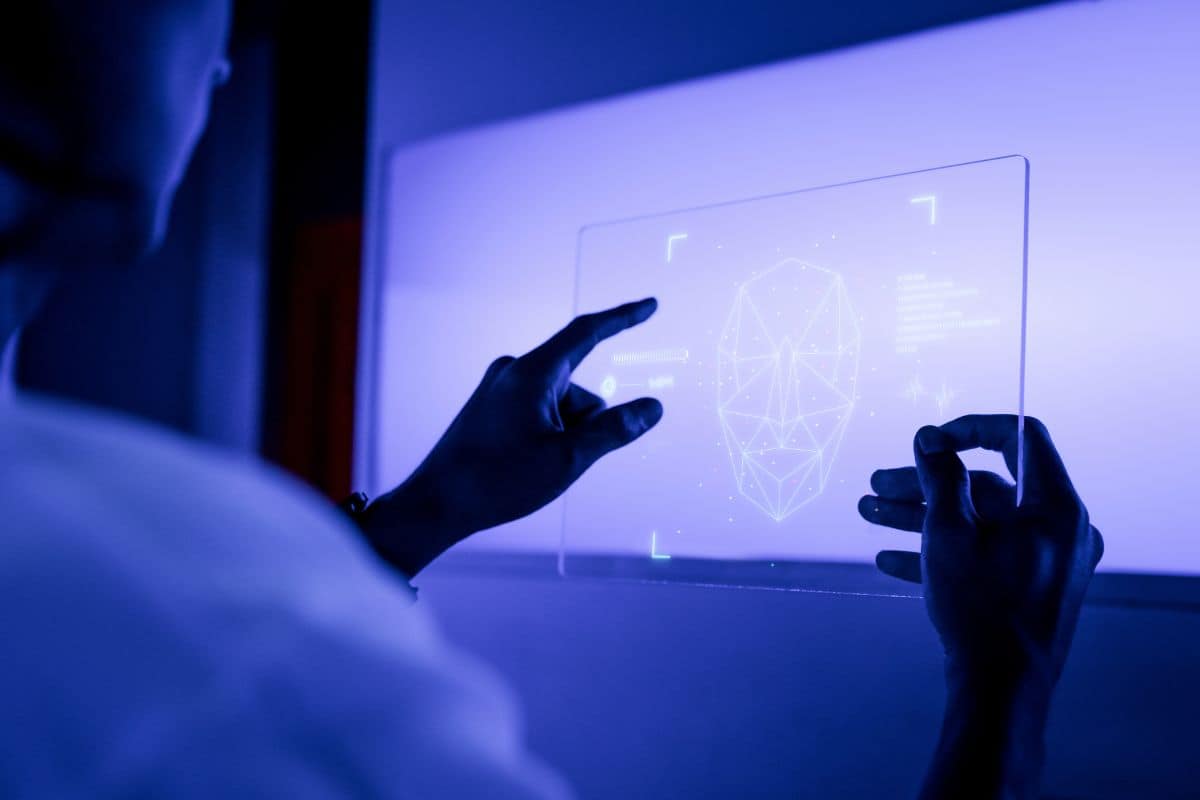Many schools and writing jobs now use an AI detector as standard practice.
It’s not because students or writers are banned from using AI writing tools—in fact, many universities and agencies encourage their use.
What is being watched is how they’re used.
AI detectors don’t always exist to punish people for using these tools (although it depends if AI is strictly banned in the situation), as it’s also often used to catch writing that feels too robotic and generic.
AI can be used as a writing assistant, but the final piece should sound like you.
Nowadays, it’s easy to spot a purely AI-written piece just by reading the words that were used.
But when it’s unclear, AI detectors help identify the likelihood that content was created by an AI platform like ChatGPT.
But how do AI detectors work exactly?
Here’s everything you need to know about AI detectors, how they work, and how they can improve the quality of AI-generated content.
What Is an AI Content Detector?
An AI content detector is a tool that analyzes text to determine whether it was written by a human or generated by artificial intelligence.
It’s like a digital sniffer dog that sniffs out patterns, structures, and linguistic fingerprints that scream “a robot wrote this.”
These tools examine everything from sentence flow to word choice frequency.


Never Worry About AI Detecting Your Texts Again. Undetectable AI Can Help You:
- Make your AI assisted writing appear human-like.
- Bypass all major AI detection tools with just one click.
- Use AI safely and confidently in school and work.
They look for telltale signs that humans typically avoid but AI models love, such as overly perfect grammar, repetitive phrasing, or suspiciously balanced sentence structures.
The technology emerged as a direct response to the explosion of AI writing tools. When ChatGPT was released in late 2022, everyone suddenly had access to sophisticated writing assistance.
Teachers started getting essays that seemed too polished. Content managers noticed their freelancers’ work becoming oddly consistent.
AI detectors stepped in to fill the gap, promising to restore order to the chaos.
Some work better than others, but they’re all trying to solve the same problem: identifying machine-generated text in a world where the line between human and AI writing keeps getting blurrier.
Most AI detectors give you a percentage score. Something like “85% likely to be AI-generated” or “12% artificial content detected.”
These numbers seem precise, but they’re actually educated guesses based on pattern recognition.
How Do AI Detectors Work?
AI detectors utilize two types of technology to detect AI-generated content: machine learning and natural language processors.
Both of these allow the AI detector to identify predictable language patterns, syntax, and complexity levels.
If the detector recognizes enough of these patterns, it provides a likelihood that AI generated the text.
But what do AI detectors compare their findings to? Most AI detectors have been trained on thousands, if not millions, of datasets.
This helps the detector identify and compare the text example to pieces of AI-generated content that it has already learned.
So, not only does the detector find patterns in the writing that are indicative of AI generation, but it also compares this to thousands of examples of AI text.
The goal is to spot the differences between how humans write and how AI models construct text.
Here’s what they typically look for:
- Perplexity scores measure how predictable the text is. Human writing tends to be more unpredictable. We make weird word choices, start sentences awkwardly, and generally write in ways that surprise even ourselves. AI models, on the other hand, tend to choose the most statistically likely next word or phrase.
- Burstiness analysis examines sentence length variation. Humans write with natural rhythm. We alternate between short, punchy sentences and longer, more complex ones. AI often produces text with eerily consistent sentence lengths and structures.
- Semantic patterns reveal how ideas flow from one to the next. Human writers make logical leaps, include tangents, and sometimes circle back to earlier points. AI tends to follow more linear, predictable thought patterns.
- Vocabulary distribution looks at word choice frequency. Humans have favorite words and phrases we overuse, and we also avoid certain words entirely. AI models have different vocabulary preferences based on their training data.
For those creating academic work like research proposals, ensuring originality goes beyond just detecting AI content — it’s about verifying truthfulness, too.
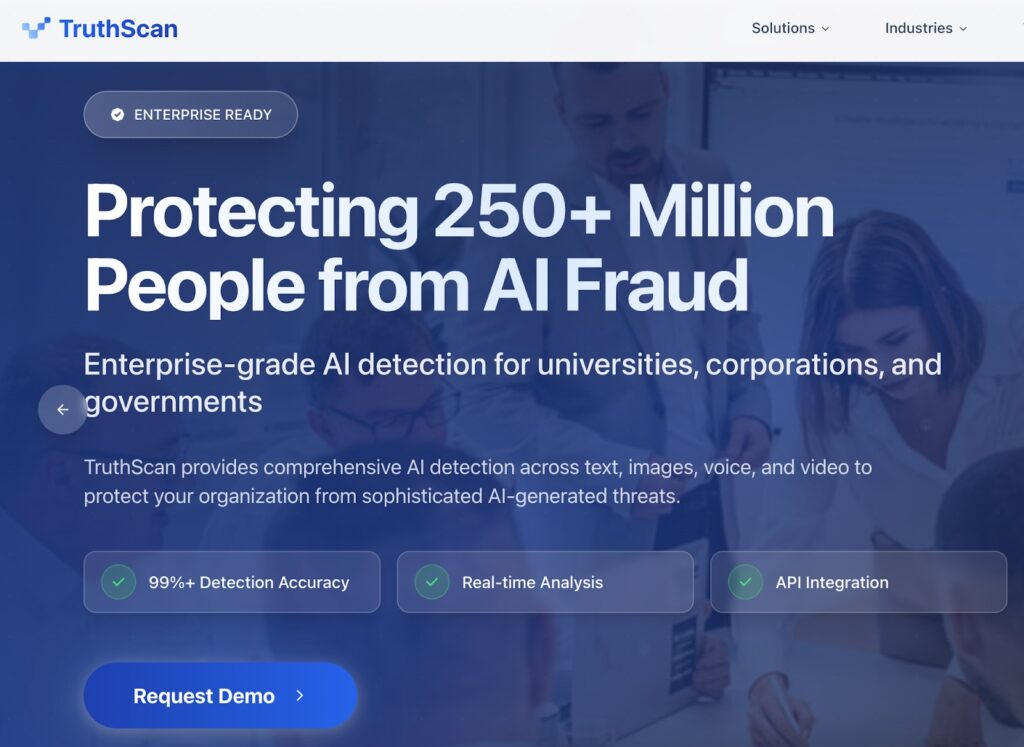
That’s where TruthScan comes in. Built to support the education sector, TruthScan doesn’t just flag AI-generated writing.
It helps confirm the reliability of your claims, highlight unsupported facts, and suggest revisions to keep your research academically sound.
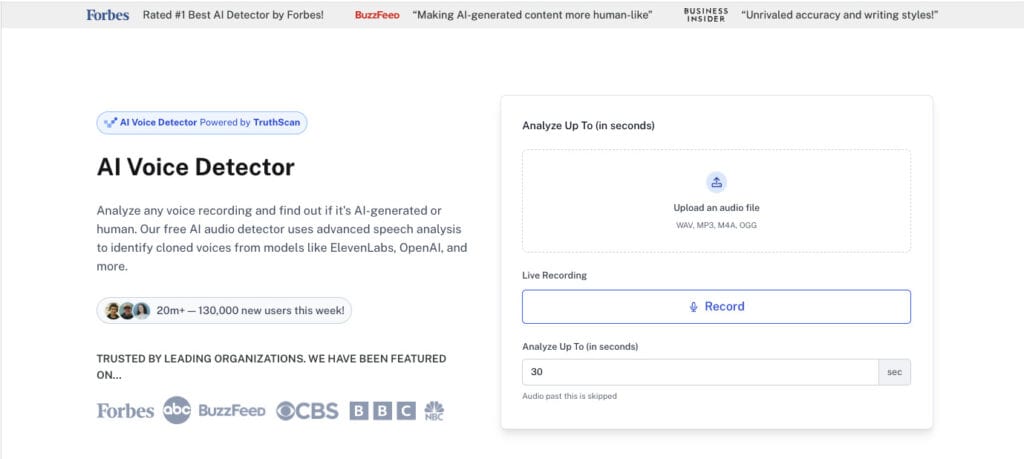
As more schools experiment with spoken assignments, podcast projects, and voice-based explanations, AI-generated audio is becoming part of the classroom too.
To keep things fair and transparent, our Undetectable AI’s AI Voice Detector helps educators and institutions check whether a voice clip was recorded by a real student or synthesized by an AI voice tool.
It’s a simple way to support honest work, reinforce academic integrity policies, and ensure that oral submissions genuinely reflect each learner’s own effort.
Common Problems with Most AI Checkers
AI detectors are not perfect.
In fact, some of them are quite flawed. Understanding their limitations is key if you’re relying on them for important decisions.
| Common AI Detector Issues | Impact Level | Frequency |
| False Positives | High | Very Common |
| Training Bias | Medium | Common |
| Model Lag | High | Ongoing |
| Context Blindness | Medium | Universal |
| Threshold Confusion | Low | Common |
- False positives are rampant. Many AI detectors flag perfectly human-written content as artificial. This happens especially with non-native English speakers, technical writing, or content that follows certain formatting conventions.
- Training bias affects results. Most AI detectors were trained primarily on English content from specific sources. They struggle with other languages, cultural writing styles, or specialized domains. A technical manual might score high for AI detection simply because it uses precise, formal language.
- They can’t keep up with new AI models. AI writing technology evolves rapidly, and new models produce more human-like text. But detectors take time to adapt their algorithms. There’s often a delay before new AI-generated content gets picked up.
- Context matters, but some detectors don’t understand it. A medical research paper and a personal blog post have completely different writing conventions. However, most AI detectors apply the same analysis criteria to both, leading to inconsistent and unreliable results.
- Threshold confusion creates problems. What percentage constitutes “AI-generated”? 50%? 80%? 95%? Different tools use different thresholds, and users often don’t understand what the numbers actually mean.
- Length dependency skews results. Short texts are harder to analyze accurately. A two-sentence response might get flagged as AI simply because there isn’t enough content to establish clear patterns. Longer texts generally produce more reliable detection results.
AI Detectors vs. Plagiarism Checkers
If you’ve been researching AI detectors, you have no doubt come across plagiarism checkers as well.
What is the difference between an AI detector and a plagiarism checker?

A plagiarism checker scans the text and compares it to a massive database of published work on the internet.
Unlike an AI detector, a plagiarism checker does not care about who or what created the content, but rather if the content was copied from another source.
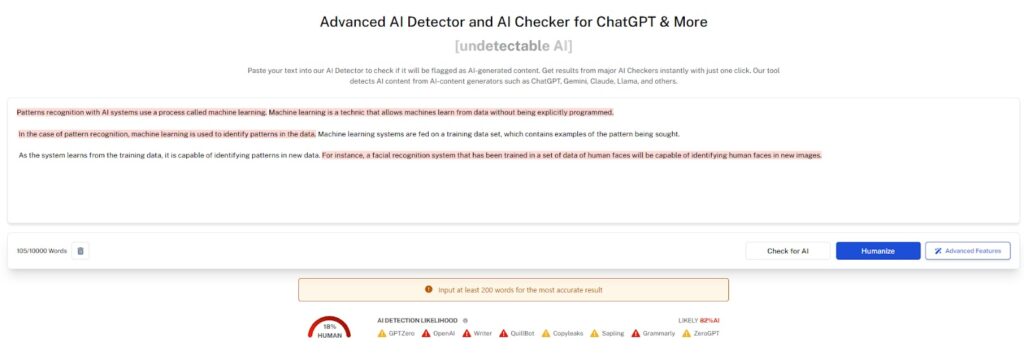
On the other hand, AI detectors analyze writing patterns.
They don’t care if the content exists elsewhere. They want to know if a human or a machine wrote it originally.
Think of it this way: plagiarism checkers ask, “Was this stolen?” while AI detectors ask, “Was this artificially created?”
The tools use completely different technologies. Plagiarism checkers rely on massive databases and string-matching algorithms.
AI detectors use machine learning models trained on writing pattern recognition.
Their purposes differ too. Plagiarism checkers protect intellectual property and academic integrity, while AI detectors verify content authenticity and human authorship.
Typically, if a phrase matches five or more consecutive words from another source, it will be flagged as plagiarism.
Can Plagiarism Checkers Detect AI-Generated Content
While the plagiarism checker’s job is not to detect AI-generated content, there are some occasional times when the two overlap.
Why would this happen?
Believe it or not, some AI language models have provided plagiarised content as an output.
It might not be intentional, but AI tools can accidentally copy phrases from another source on the internet.
This is another red flag for passing off AI-generated content as your own. Writers should be extra vigilant to run their content through a plagiarism checker as well.
There is a gray area with AI detection tools but if you are a paid writer that is publishing plagiarized work, there can be some real-life consequences.
Difference Between AI Content and Plagiarized Content
While there is the occasional overlap between the two types of content, they are usually on opposite ends of the spectrum.
AI-generated content tends to be original, albeit written in a mechanical style.
This content needs to be fact-checked by a human writer and scanned for potential incidental plagiarism before being submitted or published.
Plagiarized content can be produced by either a human writer or an AI tool. When a human creates plagiarized content it is usually intentional.
If an AI tool creates plagiarized content it is almost always accidental.
Despite this difference, content should still be scanned for plagiarism whether written by a human or AI tool.
Does Google Penalize AI-Generated Content
This is a question with some layered answers.
On the surface level, Google does not penalize sites for publishing AI-generated content.
Google’s updated policies do not care if you use AI text, AI images, or any other form of AI content on your site.
Your page will not be taken down, nor will your ad revenue be diminished.
But there are important caveats.
- Quality over source is Google’s official position. They care more about whether content is helpful, accurate, and valuable to users than whether a human or AI created it. Their algorithm evaluates content based on E-A-T principles: Experience, Expertise, Authoritativeness, and Trustworthiness.
- Disclosure isn’t required according to Google’s guidelines. You don’t need to label AI-generated content as such. However, you remain responsible for the quality and accuracy of anything you publish.
- Mass-produced low-quality content is where problems arise. If you’re using AI to generate tons of thin, unhelpful content just to target keywords, Google will likely penalize that. But this applies to any mass-produced content, whether AI-generated or human-written.
- Recent algorithm updates have emphasized content quality over quantity. Google’s helpful content system specifically targets content that seems created primarily for search engines rather than humans. AI-generated content that falls into this category will struggle in rankings.
Several prominent sites use AI tools to create content and have not been punished in terms of SEO ranking.
But what Google has done is update its search ranking algorithm.
In a recent updated SQO guidelines, Google stressed that firsthand experience and being an experienced expert on the topic are critical for the page to rank well.
If you are using AI content, it won’t include any first-hand knowledge or experience, since that can only be provided by a human.
Does Google Penalize Plagiarized Content
While you might think this would be an obvious penalty, it’s surprising to know that Google doesn’t penalize plagiarized content.
Nearly 30% of websites have duplicate content, which would require Google to penalize millions of sites.
Google Search Advocate John Mueller has revealed that duplicate content will not affect your search ranking.
If the Google algorithm finds the same content on multiple pages, it will choose which page to rank based on how helpful it is to the reader.
The bad news is that if someone copies your content, they could potentially outrank you using your work.
Prevention is straightforward: create original content or properly attribute and license any content you use from other sources.
Most successful websites have strict policies against plagiarism.
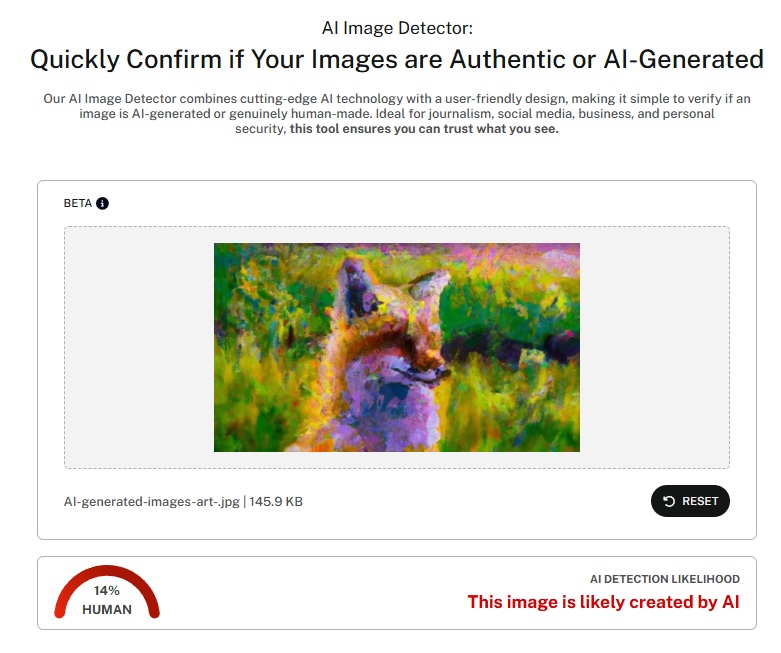
Speaking of detection, Undetectable AI recently launched an image detector that can identify AI-generated images.
This AI Image Detector addresses the growing concern about synthetic visual content, complementing text-based detection capabilities.
For enterprise and large-scale verification, TruthScan’s AI Image Detector offers deeper visual analysis. It identifies pixel-level manipulation, lighting inconsistencies, and AI-generated composites across photos and graphics.

By verifying image authenticity in real time, it helps organizations prevent misinformation and ensure visual integrity alongside text-based content checks.
Deepfake Detection: Verifying Audio and Video Content
While text detection covers one part of the picture, today’s misinformation often extends beyond writing.
Our Undetectable AI’s Deepfake Detection expands your verification toolkit to include audio and video analysis, helping you confirm whether content has been digitally manipulated or artificially generated.
By examining frame sequences, sound waves, and pixel-level patterns, Deepfake Detection identifies signs of cloning, frame tampering, and synthetic motion that traditional detectors miss.
Simply upload the file and receive a clear confidence score with visual or audio highlights showing where manipulation may have occurred.
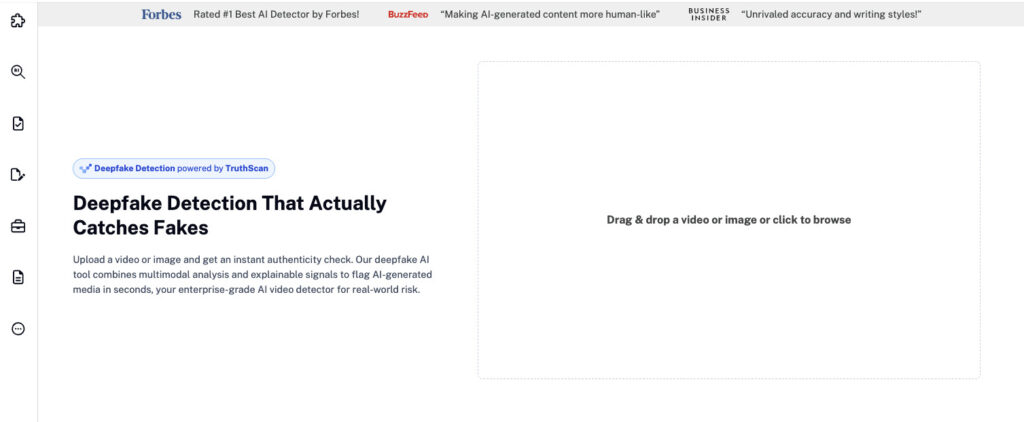
When used together with AI text and image detectors, Deepfake Detection provides a complete authenticity check for the modern media landscape, ensuring that every word, image, and clip you share is genuinely real.
How Do I Make AI Text Undetectable?
Making AI text undetectable requires understanding how detection algorithms work and strategically modifying the content to avoid their triggers.
- Vary your sentence structure dramatically. AI tends to produce consistent sentence lengths and patterns. Mix short, punchy sentences with longer, complex ones. Throw in some fragments for emphasis. Change your rhythm constantly.
- Add personal touches and experiences. AI content often lacks personal anecdotes, specific examples, and human quirks. Insert your own stories, opinions, and unique perspectives. These elements are nearly impossible for AI to replicate authentically.
- Introduce intentional imperfections. Humans make small grammatical mistakes, use colloquialisms, and write with natural imperfections. Perfect grammar and flawless structure can trigger AI detection. Add some humanity to your writing.
- Use unexpected word choices. AI models tend to select predictable vocabulary. Choose surprising synonyms, use slang appropriately, and avoid overly formal language unless the context demands it.
- Edit extensively after AI generation. Don’t just fix grammar and spelling. Restructure paragraphs, reorder ideas, and rewrite sections in your own voice. The more human editing involved, the less detectable the AI origin becomes.
- Break up predictable patterns. If your content follows a very logical, linear structure, shake it up. Add tangents, circle back to earlier points, and let your thoughts flow more naturally.
The goal isn’t to deceive but to create content that genuinely reflects human thought processes and writing patterns.
Ask AI to Re-Write Your Content
Believe it or not, you can ask tools like ChatGPT or Jasper.AI to re-write their own content.
You can even use specific inputs that instruct the app to use more natural language.
Re-writing the content with the same app will force it to use different language and vocabulary.
Oddly enough, a second or even third time through will yield much more positive results when running this content through an AI detector.
Use AI Scrambling Tools
If you simply do not have the time to manually edit all your articles, then using AI scrambling tools can be a godsend.
These tools can take your AI-generated content and humanize it by rearranging it in a way that will pass AI detector tests.
AI-humanizing tools know exactly what AI detectors are looking for and can apply this to your content. If you are still getting flagged by an AI detector, you can run your content through the AI scrambler multiple times.
Each time should yield a more refined output and a higher chance of making that AI text undetectable.
And if you want the best solution possible, then read the next topic:
The Best Tool to Make AI Content Undetectable
When it comes to making AI content undetectable while maintaining quality, Undetectable AI leads the market with a comprehensive suite of tools designed for different content needs.
The AI Detector and Humanizer combine detection and modification in one platform. First, it analyzes your content to identify AI-generated sections.
Then, it rewrites those sections to sound more human while preserving the original meaning and intent.
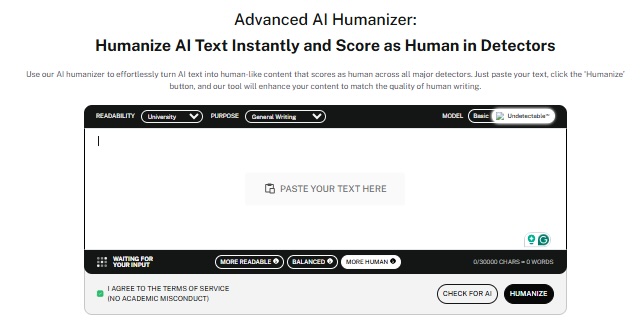
The humanizer doesn’t just randomize words or add errors but understands context, maintains coherence, and produces content that reads naturally.
That way, you get the efficiency of AI generation with the authenticity of human writing.
The AI SEO Content Writer creates search-optimized content that naturally avoids detection triggers.
It understands both SEO requirements and human writing patterns, producing content that ranks well and passes authenticity checks.
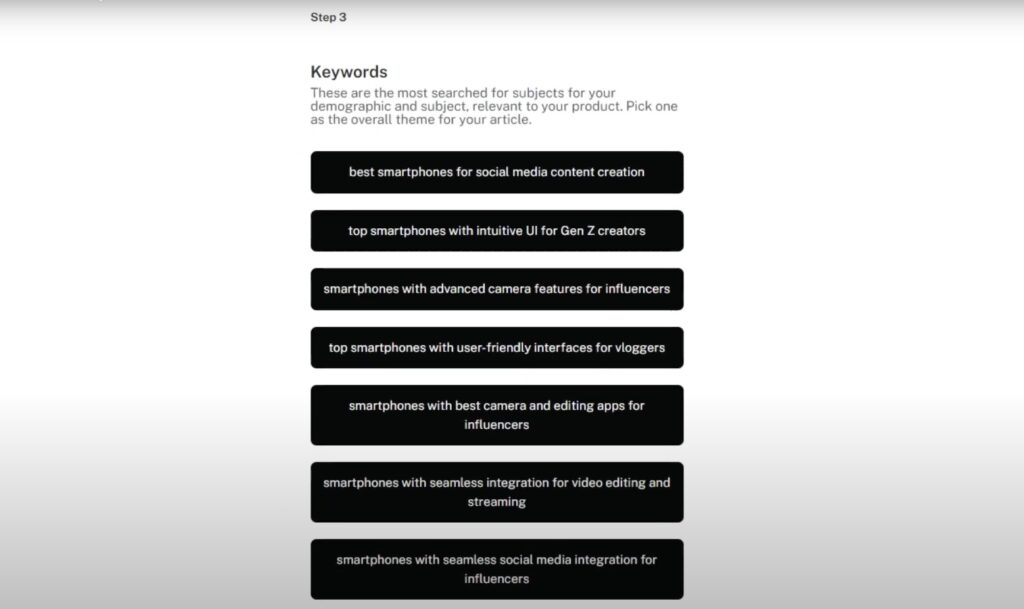
This tool is perfect for marketers and content creators who need to scale their output without sacrificing quality or raising detection flags.
It handles keyword integration, meta descriptions, and content structure while maintaining natural language flow.
The AI Stealth Writer specializes in academic and professional writing that needs to fly under the radar.
It understands the specific requirements of different writing contexts and adapts its output accordingly.
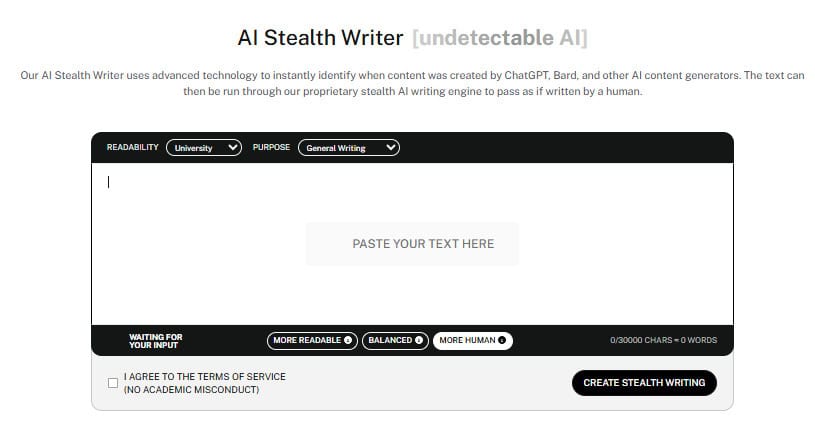
Whether you’re working on research papers, business reports, or technical documentation, this tool produces content that matches human writing patterns in your specific field.
The AI Essay Writer creates completely original essays from scratch that naturally avoid detection triggers.
It incorporates research, develops arguments, and structures content in the way human writers approach essay composition.
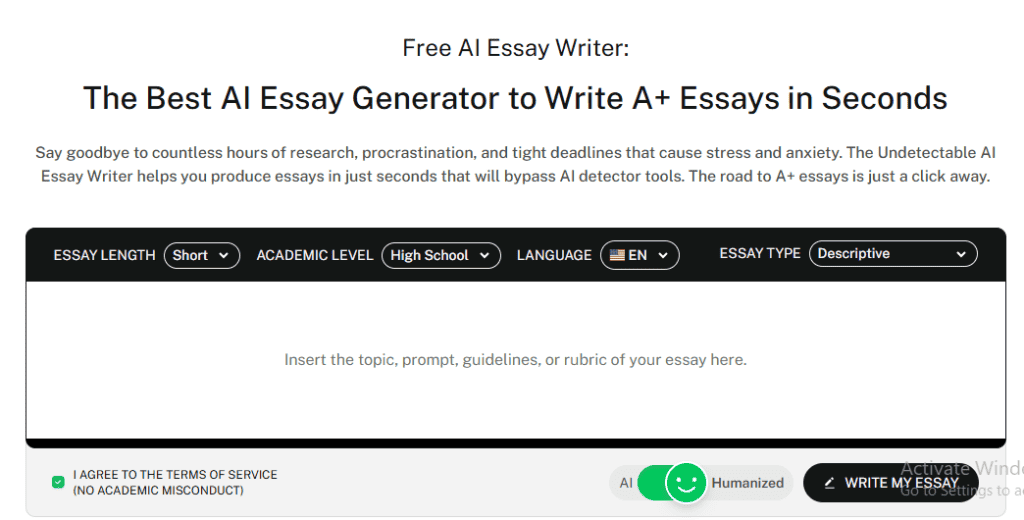
All of these tools work together to provide a complete solution for anyone who needs to create authentic, undetectable content at scale.
Access our AI Detector and Humanizer directly through the widget below.
FAQs
How reliable and accurate are AI detector tools?
Accuracy varies between 60% and 80% in best-case scenarios, but real-world performance is often lower.
Factors like text length, writing style, and newer AI models affect results. Short texts and technical writing often yield false positives, while detectors may miss newer AI-generated content.
They’re best as screening tools, not definitive proof.
Can AI content detectors be wrong?
Yes, regularly. False positives can wrongly flag human work, especially technical writing or non-native English.
False negatives let AI slip through undetected as models improve.
Use detector results as one clue, not final evidence.
What is the future of AI-generated content detection?
It’s an arms race between smarter AI and better detection. Multi-modal analysis and improved training data will help, but AI writing keeps evolving too.
Expect more integration with platforms, as well as clearer rules on AI disclosure and use.
This will remain an ongoing challenge.
The Future of AI Detection: Stay Ahead
So now you’ve learned about the magic behind how AI detectors work.
These tools rely on large datasets and predictable patterns found within AI-generated content.
For those who need to work with AI-generated content while maintaining authenticity, tools like Undetectable AI provide sophisticated solutions that preserve quality while avoiding detection triggers.
The future will likely bring more sophisticated detection methods and clearer guidelines for AI content use.
But for now, the focus should be on creating helpful, accurate, and valuable content while being transparent about the tools and methods used in the creation process.
The goal isn’t to trick the system. We want to harness the power of AI assistance while still maintaining the authenticity and value that readers deserve.
